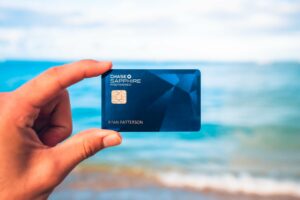Quality time together is a hallmark of a great family vacation, but sometimes kids just want to play with their peers — and adults need a break. Cruise lines understand these dual needs deeply and have designed ships accordingly, with amazing, expansive cruise kids clubs.
Kids clubs give families more choices in daytime and evening activities because they have options to hang out together or spend time apart. The clubs take the pressure off parents to find fun, age-appropriate activities for their kids all day long while suppressing their own needs for R&R and couples time. Also, kids who need video game time or social interaction with new friends can escape their siblings and “boring” adults for an hour or two … or more.
For cruise news, reviews and tips, sign up for TPG’s cruise newsletter.
Curious about kids clubs on cruise ships and how they work? I’ve sent my own kids to clubs across multiple lines and toured dozens more, so I have the answers to all your questions about these camps at sea.
What is a kids club on a cruise ship?
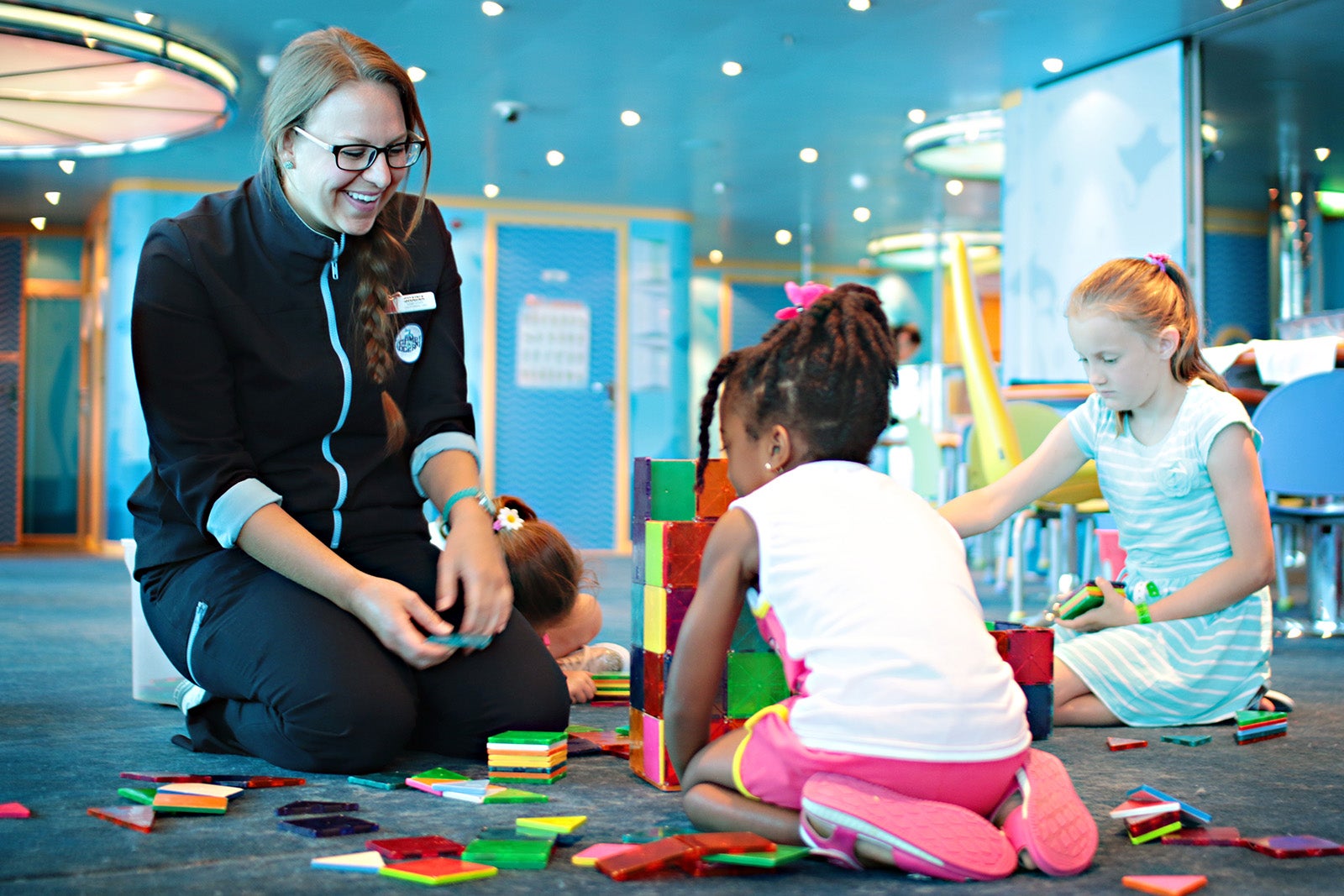
Cruise kids clubs are a combination of daycare, camp and a super-cool clubhouse. Families can drop off their kids and teens for as little as an hour to as long as nearly a full day for supervised play with other cruisers their age. The spaces for kids on a cruise ship are often clustered together, though tween and teen clubs might be separate.
Kids are not required to visit the kids clubs and can spend as much or as little time in the facilities as they and their families choose. Younger kids must be signed in and out by an adult caregiver; older children and teens can sign themselves in and out.
The kids clubs are run by the ship’s youth staff, who are trained and experienced in childcare. For example, Royal Caribbean requires a four-year university degree in education or a related field (or an international equivalent) and three to five years of work experience in childcare. Youth staff on all lines take more of an active role in activities with younger kids and serve more as cool facilitators with the teens.
Related: The 5 best cruise lines for families
What are the ages for kids clubs on cruise ships?
Each cruise line divides up its kids clubs differently, but you can expect that the littlest kids and oldest teens will not be together.
The main kids club typically accepts children as young as 3 (and toilet trained) and goes up to 10, 11 or 12, depending on whether the ship has a separate tween club. Tween clubs are often for kids ages 11 or 12 to 14, and teen clubs take 13- or 14-year-olds through 17-year-olds.
Your 18-year-old high schooler will not be able to visit the teen club, so keep that in mind if you’re planning to take a family cruise during spring break of your child’s senior year, for example.
Some lines, such as Carnival Cruise Line, will accept kids in the club as young as 2 years old. Other lines, like Disney Cruise Line, have nurseries for babies and toddlers younger than 3.
The younger kids club might also divide attendees into smaller age groups for certain activities. For example, MSC Cruises offers a Mini Club for kids ages 3 to 6 and a Junior Club for kids ages 7 to 11. Carnival divides its Camp Ocean into Penguins (2 to 5 years old), Stingrays (6 to 8 years old) and Sharks (9 to 11 years old).
Related: Best kid-friendly cruises: The 7 best cruise ships for kids
Are kids clubs on cruises free?
Yes! All kids club activities during the day and early evening for kids and teens are included in your cruise fare.
However, you might have to pay extra to drop off babies and toddlers at onboard nurseries. Also, late-night childcare for kids in the main club — usually starting at 10 or 11 p.m. — might cost extra on your ship. Both are often charged at an hourly rate for the time you use, with the occasional sibling discount.
What are the kids club spaces like?
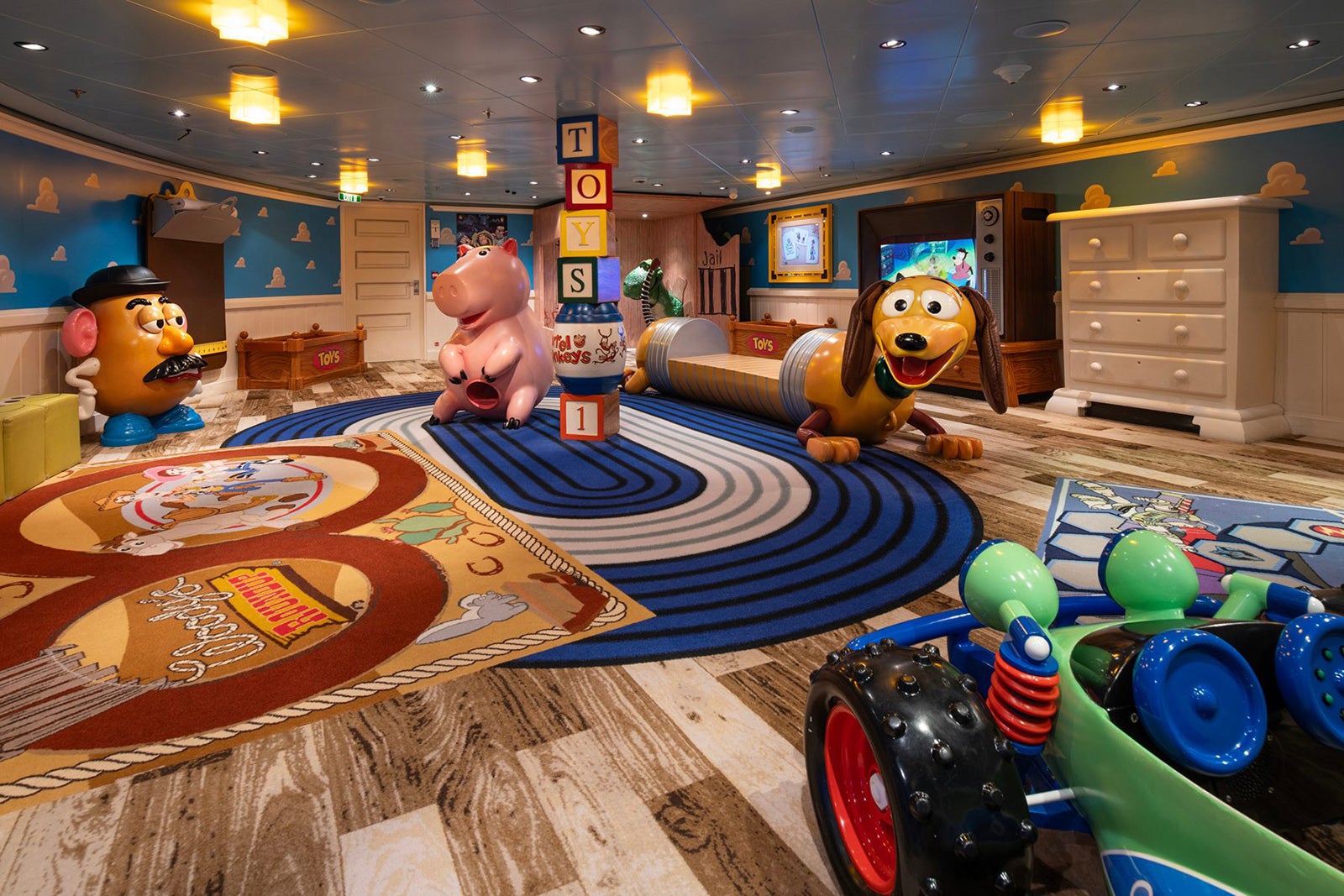
Kids clubs for 3- to 12-year-olds are often multipurpose spaces that the ship’s youth staff can set up with tables and chairs or clear out for group games. They all come equipped with video game areas, with stations set up with monitors and game consoles, and some might have other high-tech games on the walls, floors or tables, or other games like air hockey or foosball. The spaces often have colorful decor, perhaps themed to the ocean or nature.
On Royal Caribbean’s larger ships, you’ll find multiroom play areas with separate spaces for art workshops, science experiments, sports and active games, and theatrical productions. Disney’s kids clubs have rooms themed to different movies and characters, including a replica of the Millennium Falcon from “Star Wars,” a play area done up like Andy’s room from “Toy Story” and Tinkerbell’s Pixie Hollow. MSC Cruises’ kids clubs have dedicated areas for building with Lego bricks.
Tween and teen lounges are cool hangouts with lots of comfy seating areas for chatting with newfound friends, checking social media accounts, playing games and watching movies. Some have dance floors with DJ booths and mocktail or soda bars. A few even have outdoor patio space for sunbathing, occasionally with a hot tub, splash pool or lawn games.
Related: The 5 best cruises for teens
Nurseries and play spaces for younger cruisers have age-appropriate toys and soft flooring, perhaps even a small climbing structure or slide. Nurseries will have a quiet area with cribs and cots in the back for naptime, as well as diaper changing stations.
Kids clubs all have bathrooms in them, often with kid-height facilities.
What activities can my child do in a cruise kids club?
Cruise ship kids clubs offer a mix of free play and guided group activities, so there’s something for every child to enjoy.
Kids can enjoy traditional camp activities like arts and crafts, silly group games and scavenger hunts around the ship. They can also get active with sports competitions in the club or up on the ship’s sports courts. When it’s screen time, kids can challenge each other to video games or gather together to watch a movie on a big screen. Science experiments and puppet shows are also popular activities.
Tween and teen activities lean more toward parties, foosball tournaments, sports and group games, with lots of unstructured time for hanging out. Events might take place around the ship, not just in the tween or teen club.
The youngest cruisers can enjoy story time, song sessions and other toddler games.
Are the kids clubs open all day?

Open hours for cruise kids clubs will vary by ship and itinerary. On one sailing, you might find different opening times for sea days versus port days.
Generally, kids clubs are open from 9 or 10 a.m. until 10 p.m. Some will be open until midnight or 1 a.m., and some will charge an hourly rate to watch your kids after 10 or 11 p.m. Some kids clubs might close for lunch or dinner, so be sure to check when you drop off your kids the time you need to pick them up.
On port days, cruise kids clubs often open an hour before disembarkation time, especially clubs that allow parents to drop off their kids and explore in port without them.
Tween and teen clubs might not open until the afternoon to accommodate late sleepers. On the flip side, these clubs will run programming later in the evening without additional fees.
Is there food at cruise kids clubs?
Cruise kids clubs don’t generally serve food due to the number and variety of food allergies found in the hundreds of kids who could be on board a ship at any time.
Some cruise ship kids clubs might offer special group lunches or dinners in the buffet or even offer a cooking class. Clubs that offer port day care while parents are ashore will, of course, make sure kids get lunch.
Related: The ultimate guide to cruise ship food and dining
Can kids clubs accommodate children with disabilities?
Cruise lines try to be as accommodating as possible of travelers with disabilities, and the youth staff is happy to work with families to welcome kids with special needs into the kids clubs. However, do not expect one-on-one care or highly trained special needs professionals.
Several lines, such as Royal Caribbean and MSC Cruises, require youth staff members to undergo autism awareness training. Carnival has partnered with KultureCity to become “sensory inclusive” certified to work with guests with autism, ADHD and Down syndrome. Its kids clubs are stocked with helpful items, such as weighted vests, sensory games and conversation cards.
Families should notify a cruise line’s special needs department ahead of sailing to alert them to their child’s needs. Once on board, you might be able to move your child to a different age group to be with a sibling or to accommodate developmental differences. Most youth staff cannot help with toileting but might be willing to give caregivers a pager so they can come and help when required.
Alternatively, ship staff might allow a parent or caregiver to accompany a child with special needs to certain kids club activities.
How do cruise kids clubs handle safety?
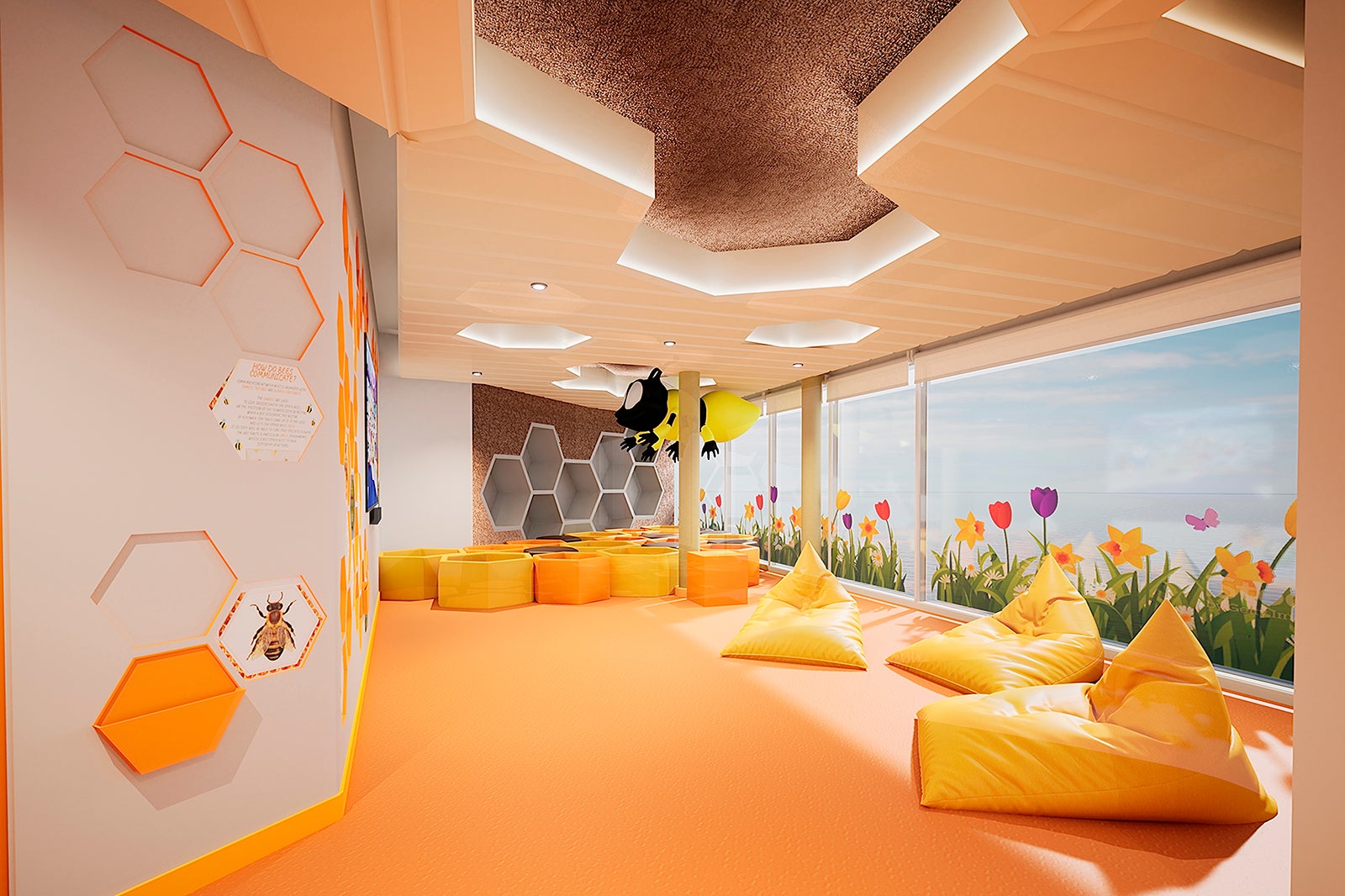
Youth staff are all carefully vetted; they’re required to be first aid-certified and undergo reference and background checks.
Ships have protocols for what to do in case of an emergency if children are in the cruise kids clubs. Youth staff will either bring them to their muster stations or to a central pickup point, and at no time will leave children unattended.
Additionally, kids clubs have rules for fire safety, including a maximum occupancy. During peak family travel times, you might find that you can’t drop off your child at the kids club when you wish because it has reached full occupancy, and you’ll need to wait for someone to leave before your kid can enter.
Related: Are cruises safe? Here’s what you need to know about cruise ship security and safety
Which cruise lines have kids clubs?
All of the big-ship cruise lines have kids clubs. Cruise lines with a greater family focus will often devote more onboard space to youth facilities, though newer, bigger ships will typically have larger kids clubs. Lines like Holland America and Celebrity Cruises are more adult-focused and still have kids clubs, but they might not have the same wow factor.
Here’s an overview of the major cruise lines’ kids clubs:
Carnival Cruise Line
The Carnival cruise kids club is called Camp Ocean, and its tween and teen clubs are Circle C and Club O2. Camp Ocean takes kids as young as 2 and is divided into three age groups: Penguins (2 to 5 years old), Stingrays (6 to 8 years old) and Sharks (9 to 11 years old).
Celebrity Cruises
Camp at Sea is Celebrity’s cruise kids club. Younger cruisers are divided into Shipmates (3 to 5), Cadets (6 to 9) and Captains (10 to 12), and teens (13 to 17) get their own Teen Club. Some ships have a special STEM at Sea program in partnership with the Frost Science Museum.
Disney Cruise Line
The Disney cruise kids club is called the Oceaneer Club, sometimes with a second space called the Oceaneer Lab. Its tween and teen clubs are Edge and Vibe, and it offers the It’s a Small World Nursery for babies and tots under 3. The Oceaneer Club is open to kids ages 3 to 10; they can choose from a number of simultaneous activities in the Disney-themed spaces.
Holland America
Holland America’s aptly named Kids Club is divided into the Kids Program (ages 3 to 6), Tweens Program (ages 7 to 12) and Teens Program (ages 13 to 17). The kids club does not operate on 25-night or longer cruises, though the line will put on some activities for children sailing on these grand and world voyages.
Norwegian Cruise Line
The Norwegian Cruise Line kids club is named Splash Academy (ages 3 to 12), and its teen club is Entourage (13 to 17). The line also has a Guppies open play program for kids ages 6 months to 3 years, but an adult is required to accompany each child; it’s not a drop-off service like the other kids clubs. Additionally, NCL does not offer kids programming when the ship is docked in port.
MSC Cruises
MSC Cruises’ kids club, Doremiland, is divided into five clubs based on age: Baby Club (up to 3 years old), Mini Club (ages 3 to 6), Junior Club (7 to 11), Young Club (12 to 14) and Teen Club (15 to 17). MSC Cruises is an outlier in that it offers free drop-off childcare for kids under 3, as well as spaces for parents and their babies and toddlers to play together.
Princess Cruises
The kids club on Princess Cruises is Camp Discovery. Kids ages 3 to 7 hang out in The Treehouse, kids ages 8 to 12 play in The Lodge and teens 13 to 17 hang out in the Beach House. Many activities are inspired by the cruise line’s partnership with media company Discovery.
Royal Caribbean
The Royal Caribbean cruise kids club is Adventure Ocean. On newer ships, AO Juniors (kids ages 3 to 5) are separate from AO Kids (ages 6 to 12), while on older ships, they might be divided into separate spaces for Aquanauts (3 to 5 years old), Explorers (6 to 8 years old) and Voyagers (9 to 12 years old). Teens ages 13 to 17 are together in the teen club, and all but a few ships have nurseries for kids ages 6 to 36 months.
Do small ships or luxury lines offer kids clubs?
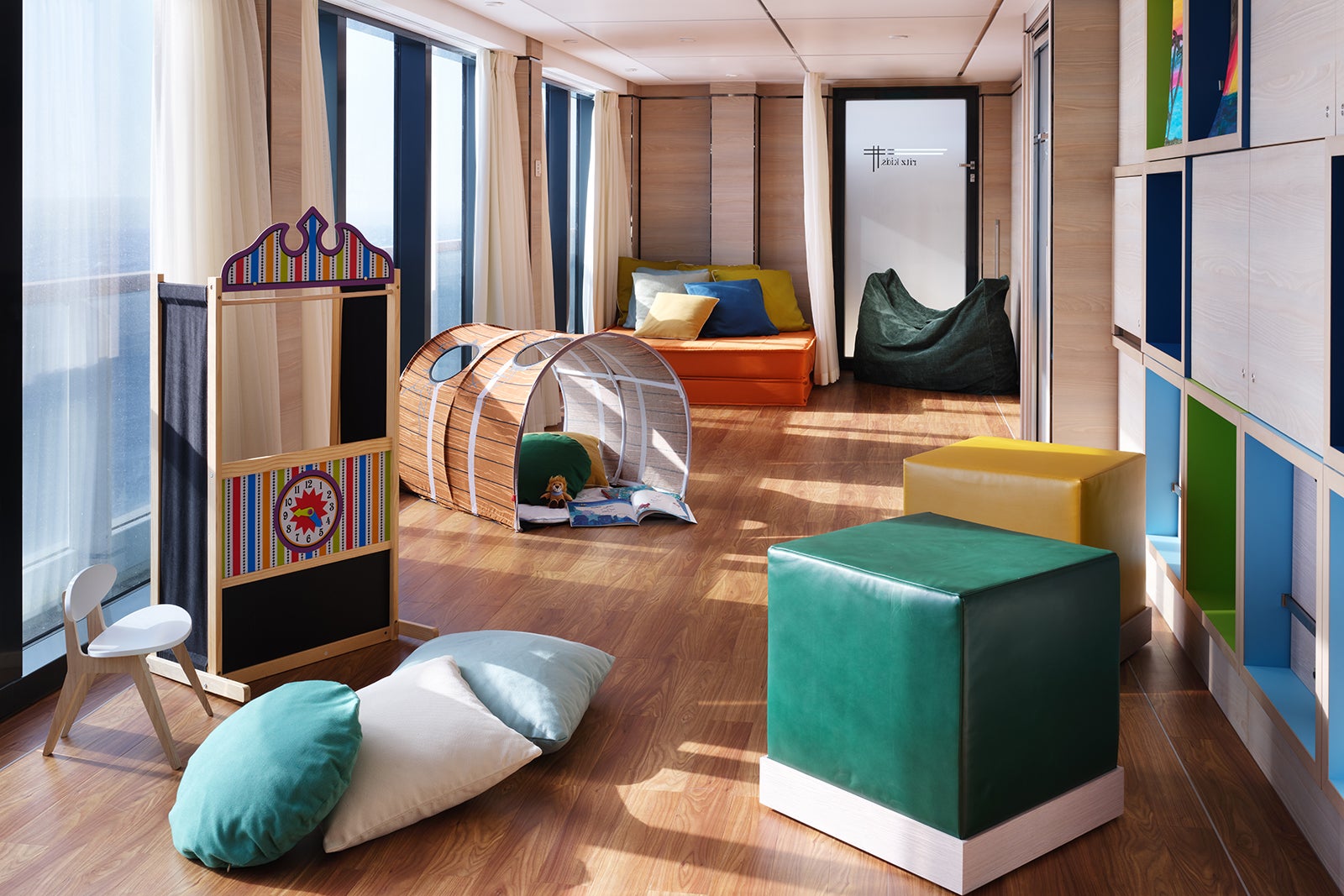
Some luxury lines embrace children, while others ban them from their decks. In general, most luxury lines will offer some kind of programming during school holidays when more kids than usual are on board.
Luxury cruise lines such as Crystal, Explora Journeys and The Ritz-Carlton Yacht Collection actually have small kids clubs on board with programming either all the time or when enough kids are present. Regent Seven Seas Cruises ships do not have youth facilities, but the line runs its Club Mariner Youth Program with age-appropriate activities when enough children are on board.
Lines like Silversea, Seabourn, Oceania and Azamara allow children on board but do not run special programs for them, though you might find an exception during Christmas week or another cruise with a greater-than-usual number of kids on board.
Some lines have age minimums. You must be 18 years old to cruise with Viking and 8 years old on Windstar Cruises.
Related: 12 tips for surviving a luxury cruise with kids
Bottom line
Cruise ship kids clubs provide a safe space for young travelers to meet and hang out with peers and enjoy age-appropriate activities in inviting spaces. The drop-off programming allows parents and caregivers to get some alone time to enjoy the ship’s spa, upscale dining venue or adults-only spaces. Kids can join in the fun for as much of the day and evening as they want; many families will spend time on the ship together and only go their separate ways for a few hours per day.
Note that some young cruisers love the kids club and want to spend whole afternoons there, and others go once and refuse to go back. Your child’s love or dislike of the kids club might even change over time or with different ships.
My best advice is to send your kid on the first evening to meet the counselors and the other children and to check out the activities when there is no expectation that they stay a certain amount of time. The more they feel that they can control when they go (and not that you are ditching them to have fun without them), the more likely they are to have a good experience.
Planning a cruise? Start with these stories:
- The 5 most desirable cabin locations on any cruise ship
- A beginners guide to picking a cruise line
- The 8 worst cabin locations on any cruise ship
- The ultimate guide to what to pack for a cruise
- A quick guide to the most popular cruise lines
- 21 tips and tricks that will make your cruise go smoothly
- Top ways cruisers waste money
- The ultimate guide to choosing a cruise ship cabin



